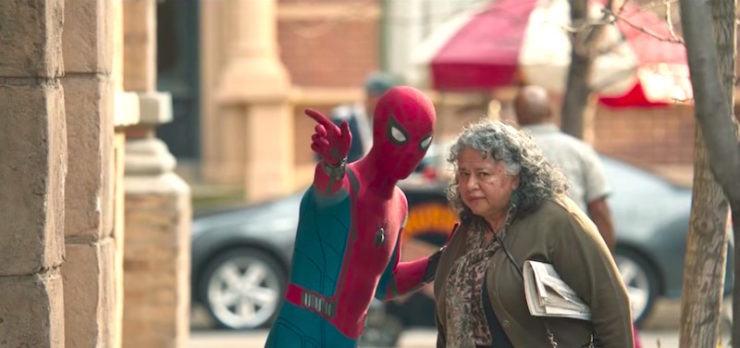There have been three different major incarnations of Spider-Man on the big screen. Three different story arcs running over the course of fifteen years, giving audiences three clear opportunities to ruminate on the values intrinsic to Peter Parker as a hero. But what does it mean to be a “Friendly Neighborhood Spider-Man”?
It’s a question that every film incarnation of the webslinger has been desperate to answer. And Spider-Man: Homecoming may have the sweetest, most genuine reply of all.
Peter Parker has had quite the journey on the silver screen in the space of less than two decades. And whatever we can say for the effectiveness of his previous incarnations, there is one thing that filmmakers got irrevocably right through and through over the years: that Spider-Man is one of the only superheroes who has an explicit, unspoken contract with his home. That Spider-Man’s greatest strength lays in the bonds he has with New York City and the strength of his community.
The first two Raimi films exemplified this in the most overt manner of any of the films. In a post 9/11 world, the desire to show New York united against any and all oncoming threats was deeply embedded in the cultural consciousness. This led the first movie to not only reject the scenario of “The Night Gwen Stacey Died” (this time played with Mary Jane instead of Gwen as the damsel in danger), but to pair that fraught moment with even more peril in the form of a dangling cable car full of people. When the Green Goblin tries to make Spider-Man choose between his love and his fellow citizens, New York doesn’t ask the webslinger to stand alone—they come to his aid, throwing rocks at Goblin and sending boats to catch the cable car passengers.
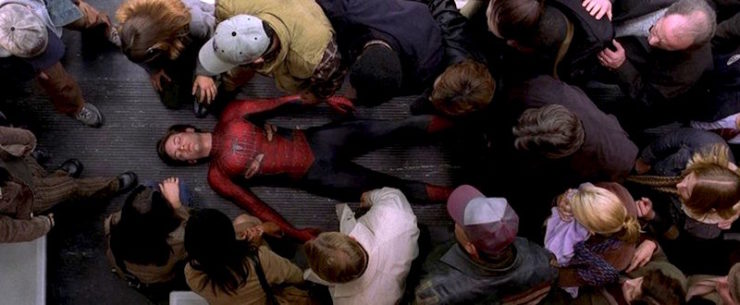
This plays out further in the sequel to the film. When Spider-Man stops a runaway train after his mask has been burned off, the passengers catch him when he collapses and then stand in the way of Doc Oc to protect him. When he wakes, they hand him back his mask and one boy assures him “We won’t tell nobody.” This small sampling of the population have seen Spider-Man’s face, know he’s practically still a boy, and they make the decision to protect him and his identity as if he were family.
The films starring Andrew Garfield don’t let up on this central tenet. In 2012’s The Amazing Spider-Man, the city’s crane operators line up to give him a clear path to Oscorp Tower after one of their own remembers that Spider-Man saved his son when their car was about to fall into the river. That same operator saves Peter when he nearly misses one of his jumps. Captain Stacey chooses to fight alongside Peter despite his suspicions about Spider-Man, once he learns that the kid is the real deal. The sequel continues this motif by showing the way that Spider-Man works with others who are meant to uphold social contracts with the city; he works with the fire department after Electro causes a few infernos, and the police take his lead when Rhino shows up at the end of the film.
Spider-Man: Homecoming offers audiences a variation on this idea. Because we are faced with the first iteration of the character who truly reads like a hapless teenager, Peter’s story is instead about coming to terms with this contract he has with his community, and his choice to make that his calling. While that may sound like small beans, Homecoming is in a better position to make that decision clear than any other Spidey film behind it because it operates in a world where superheroes are already in abundance… making Peter’s decision unique and thus more meaningful.
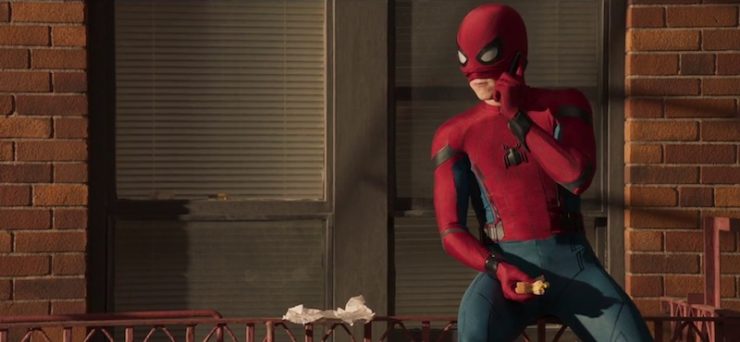
The film begins by showing us that Peter considers himself ready for the big-time after the events of Captain America: Civil War. Following a whirlwind of superheroic action, Spider-Man takes this as a cue that he’s now gone Major League and waits day after day for word from Tony Stark about his next Avengers mission. His early actions as Spider-Man are close to the ground, but largely focused on material concerns—he helps retrieve a stolen bike but has no idea who to return it to, he tries to stop someone from stealing a car that turns out to belong to them. In true Spider-Man fashion, he helps old woman with directions and she buys him a churro for his trouble, a nice callback to Spidey’s humbler roots. He does backflips on command for a guy who owns a food cart on the street.
But Peter doesn’t get a real taste of his true purpose until a crew in Avenger masks decide to knock over a bank with high tech weapons six blocks from his apartment. Excited at the prospect of catching some more serious criminal types, Spidey goes all out—but the the tech proves too much, and one of the robber’s gun slices through Delmar’s Deli across the street. Peter has to abandon the thieves in order to come to the aid of Delmar and his cat Merv, missing out on his chance for glory because saving his friend and neighbor is obviously more important. It’s also relevant that Delmar is the one who calls the cops while Spider-Man is fighting the robbers, thereby reinforcing the concept that Spider-Man can only do his job with the help of others in his community.
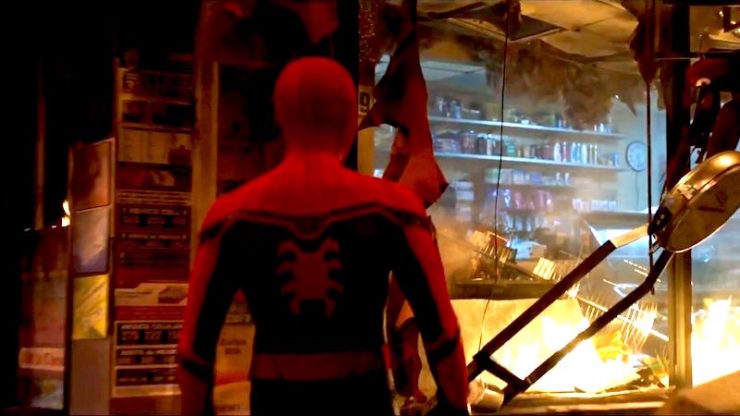
Some of Peter’s encounters with the community are less than ideal, like the number of backyards he has to crash through and roofs he has to damage to catch up with Vulture’s weapons van, and the pair of little girls he terrifies during their camp-out sleepover. As a part of his learning curve he clearly has a long way to go, but his commitment to his friends and neighbors is what ultimately brings him the greatest satisfaction at his job. Spider-Man is praised by Peter’s entire high school after he saves his Decathlon teammates at the Washington Monument, and the local news reports on the incident by showing a snap of Spidey walking out of a port-a-potty with toilet paper stuck to his boot, which reads like a loving tease leveled at their hero. He doesn’t command the awe or reverence that people might reserve for Thor and Iron Man, but that’s because Queens has claimed him as one of their own.
Things start to get serious when Peter encounters more and more of the weapons being produced by Vulture’s crew, and begins an investigation. During his interrogation of Aaron Davis, who was briefly looking to buy weapons, Spidey’s tights and web shooters and “Enhanced Interrogation” voice modulation are mostly useless—instead, Davis cooperates because he remembers that on their first encounter, Spider-Man told Vulture’s crew to aim their guns at him rather than at Davis. He then recalls that Spider-Man helped Delmar following the bank robbery, and they proceed to bond over local sandwich spots. Davis admits that he’s worried about Vulture’s crew distributing more weapons because he has a nephew who lives in the neighborhood (a very likely shoutout to another popular Spider-Man, Miles Morales). Peter gets the information he needs about Vulture’s next meeting because he has made good on his pledge to help out where needed, and because he and Davis have common ground over a desire to keep their home safe.
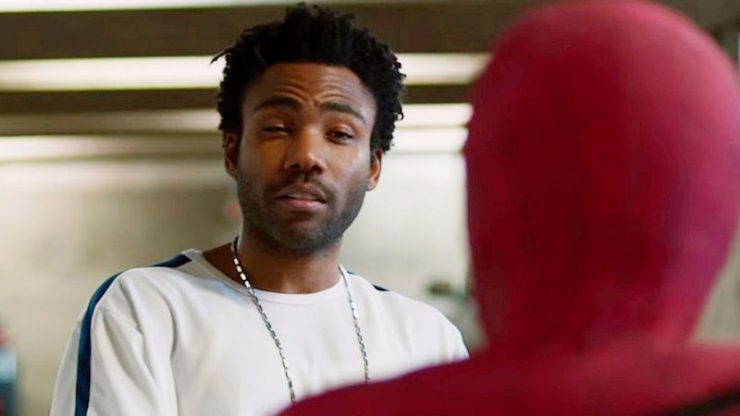
This leads to Peter making his biggest mistake in the film; his choice to head off Vulture’s men during an arms deal on the Staten Island Ferry (against Happy and Tony’s express directives) interferes with the FBI’s sting, which results in the ferry nearly getting destroyed and Iron Man having to swoop in to save the day. Tony tells Peter that he screwed up badly enough that he needs to return the Spider-Man suit, and Peter takes this about as well as you could expect any fifteen-year-old to—it’s the end of the world, as far as he’s concerned. And then something miraculous happens… Peter gets back to his life, to his friends and his neighborhood, to his classes, and he finds that the world is right where he left it. He does well in school, he asks Liz to Homecoming and she says yes, he learns how to dance (badly) and tie a Windsor knot. Because Spider-Man may be the new hero of Queens, but the only reason that’s true is because Peter Parker calls it home.
Bolstered by that renewed sense of belonging, Peter eventually does save the day and stop Vulture. But when the time comes to take his place among the Avengers, he turns Tony Stark down. He decides to be the local street level hero that was pitched to him at the outset. And here is where this version of Spider-Man outstrips the others that came before him; in the previous film iterations, it makes sense for Peter to be a boots-on-the-ground hero because he has nothing to model on, and it makes sense to stay where he’s needed. But a Spider-Man who belongs in the Marvel Cinematic Universe has a different choice to contend with, a shot at skipping his entry-level position and jumping right up to management. He has the chance to take missions of a different “pay grade,” as Tony Stark puts it. He has the chance to jump right into a world of monsters and aliens and magic, and stand alongside the greatest heroes of an era straight out of the gate.
And he says no.
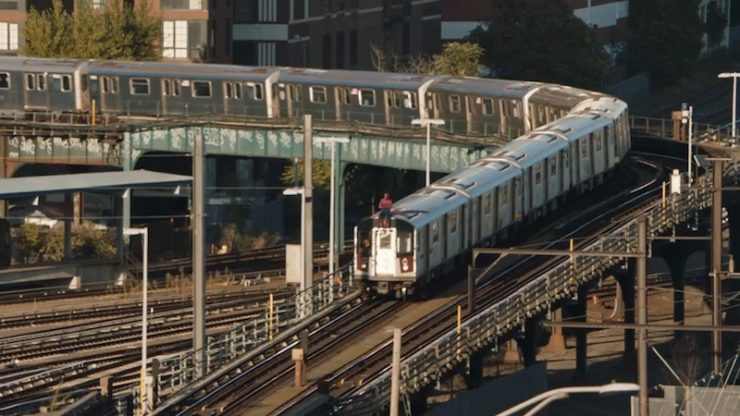
Sure, it’s partly because he’s a fifteen-year-old kid and he finally understands that. But it’s also because he is your Friendly Neighborhood Spider-Man. And in a world rapidly filling up with horrors you can’t comprehend, he wants to make sure that you can hang out on the sidewalks and always get home safe. And if he happens to need a hand one day, well… that’s a small price to pay for having someone super around who cares about your community and the people in it just as much as you do.
This is the advantage of refusing to shorthand his development with Uncle Ben’s death and calling it a day. This is the advantage of examining the idea of communal responsibility through the eyes of a teenager, rather than the jaded, grown-up eyes of someone like Matt Murdock or Luke Cage. Because you see, that title is twofold. Yeah, there’s a Homecoming dance and high school angst and the perpetual terror of figuring out who you are at a point in life when that is the most important thing ever and simultaneously the most impossible thing to get a grip on. But it’s also about Spider-Man’s homecoming. About this universe full of bright, bold super beings and hyper geniuses finally welcoming the sort of heroics that they are incapable of mimicking. Something too eager, too vulnerable, too awkward… and far too close to home.
Emmet Asher-Perrin legit saw Spider-Man on her way home from the theater, fixing his boot and heading back to Queens. It was magical. You can bug her on Twitter and Tumblr, and read more of her work here and elsewhere.










